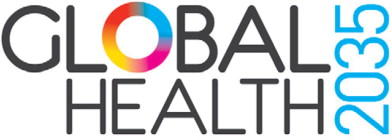Grounds for Optimism in Global Health
Professor Ole Frithjof Norheim comments on the Lancet Commission’s Global Health 2035 Report, celebrating 20 years since WDR 1993.

Main content
A grand convergence in mortality is possible: comment on Global Health 2035.
Norheim OF.
Int J Health Policy Manag. 2014 Jan 9
The World Bank’s World Development Report (WDR) 1993, Investing in Health, was controversial, but moved finance ministers and philanthropists all over the world to reconsider health funding. It highlighted the issue of insufficient health funding in low- and middle-income countries. When Gro Harlem Brundtland became the Director General of the World Health Organisation (WHO) in 1998, one of the first things she did was to commission a report on the macro-economic benefits of improving health. She endorsed a WDR 1993 recommendation of priority setting based on cost-effectiveness.
Global Health is improving
Norheim notes that since 1990, the question of global health can be described with some optimism: child mortality is lower, and life expectancies are longer. However, the global impact of the financial crisis in 2008 has meant that investment in global health has now flattened. He writes: “The grand global challenge is still inequality in mortality and life expectancy, between countries and within countries,” and cites the continuing large differences in life expectancies at birth between and within countries.
Closing the health gap
In this paper, Norheim comments on Global Health 2035, an “ambitious framework to begin closing this health gap”. He summarises the Commission’s findings in 4 main points:
- A “grand convergence” in health is achievable within our lifetimes
- The returns to investing in health are even greater than originally estimated
- Fiscal policies and well-designed interventions can dramatically curb non-communicable diseases and injuries
- Progressive universalism is an efficient way to achieve health and financial protection
How to continue the optimistic trend
Norheim concludes that there are grounds for continued optimism in global health. He writes: “Now that we have a better idea of what to do, and why, the next step is to understand better how. [] A convergence is possible, but we are not there yet.”
He makes the following suggestions for low- and middle-income countries:
- Aim for convergence in mortality and life expectancy with the best-performing countries, within a generation.
- Define and scale up essential services targeting child health, maternal mortality and infectious diseases in specified areas.
- Merge the idea of convergence interventions and the goal of progressive realization of universal health coverage.
- Increase revenue for health from economic growth, increased mobilization of domestic resources, inter-sectoral reallocations and efficiency gains.
- This investment is well justified because every dollar invested in these clearly defined essential health services provides economic benefits that are 9–20 times higher.
Lancet Commission Global Health 2035 web site
World Bank World Development Report 1993: Investing in Health

